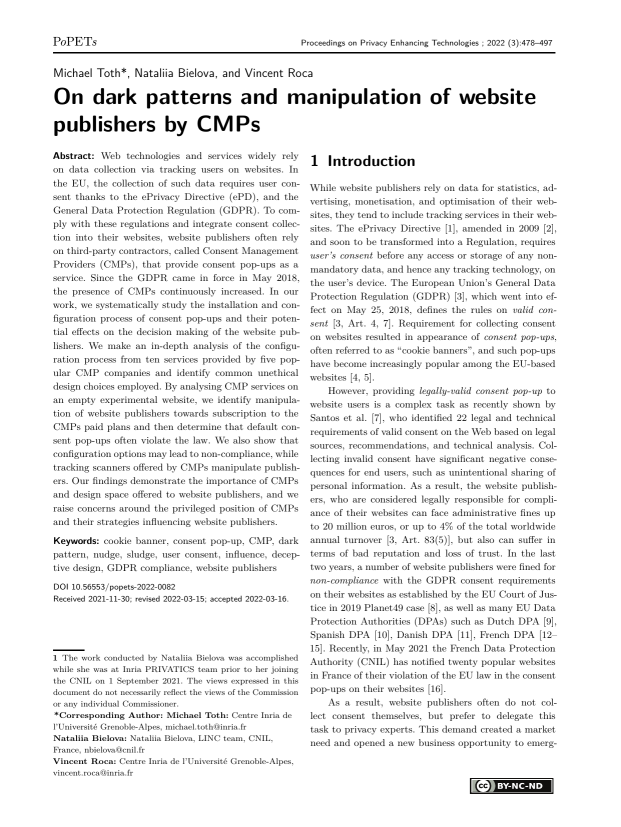On dark patterns and manipulation of website publishers by CMPs
Authors: Michael Toth (Centre Inria de l’Université Grenoble-Alpes), Nataliia Bielova (Nataliia Bielova, LINC team, CNIL, France), Vincent Roca (Centre Inria de l’Université Grenoble-Alpes)
Volume: 2022
Issue: 3
Pages: 478–497
DOI: https://doi.org/10.56553/popets-2022-0082
Abstract: Web technologies and services widely rely on data collection via tracking users on websites. In the EU, the collection of such data requires user consent thanks to the ePrivacy Directive (ePD), and the General Data Protection Regulation (GDPR). To comply with these regulations and integrate consent collection into their websites, website publishers often rely on third-party contractors, called Consent Management Providers (CMPs), that provide consent pop-ups as a service. Since the GDPR came in force in May 2018, the presence of CMPs continuously increased. In our work, we systematically study the installation and configuration process of consent pop-ups and their potential effects on the decision making of the website publishers. We make an in-depth analysis of the configuration process from ten services provided by five popular CMP companies and identify common unethical design choices employed. By analysing CMP services on an empty experimental website, we identify manipulation of website publishers towards subscription to the CMPs paid plans and then determine that default consent pop-ups often violate the law. We also show that configuration options may lead to non-compliance, while tracking scanners offered by CMPs manipulate publishers. Our findings demonstrate the importance of CMPs and design space offered to website publishers, and we raise concerns around the privileged position of CMPs and their strategies influencing website publishers.
Keywords: cookie banner, consent pop-up, CMP, dark pattern, nudge, sludge, user consent, influence, deceptive design, GDPR compliance, website publishers
Copyright in PoPETs articles are held by their authors. This article is published under a Creative Commons Attribution-NonCommercial-NoDerivs 3.0 license.

